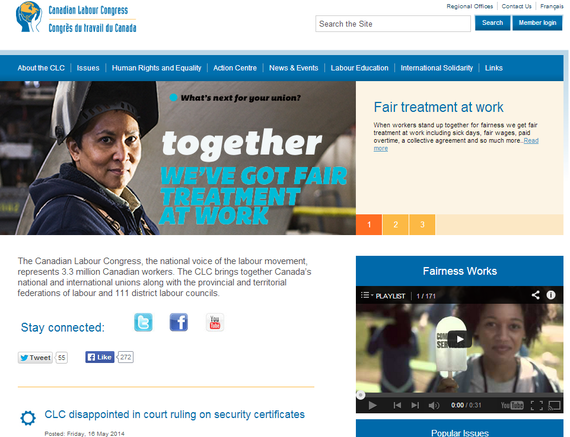
You wouldn't know it from the tone of discourse today, but immigrants and foreign workers have been part of the Canadian labour force since Confederation. Then, much as now, they were necessary to ensure Canada's economic survival. Nevertheless, 19th century immigrant workers were viewed with suspicion and contempt, assigned the most dangerous tasks and forced to work longer hours for significantly less pay than their white co-workers, whether Canadian-born or not. Chinese-Canadians are particularly sensitive to this historical blemish.
Stanley's Statement
The construction of the Intercolonial Railway was so central that it was written into the Constitution Act of 1867. As historian George Stanley wrote in The Canadians: "Bonds of steel as well as of sentiment were needed to hold the new Confederation together. Without railways there would be and could be no Canada." And without imported Chinese labourers, there would be no railway.
In the days of yore, race rather than ability was the determining factor in wages. Thus, Chinese workers were paid half of the white man's wages. There was no union to protect workers' rights or to advocate for fair wages.
The burgeoning Canadian labour movement of the early 20th century held much promise for Canada's racial minority workers. Sadly, their participation was less than welcome, their concerns discounted, and their representation within the movement limited.
The Two Brotherhoods
By the 1920s, unions had formed in the rail business, thus improving the lives of workers. Even so, the low-waged sleeping car porter jobs, exclusively reserved for black men, fell outside the union's umbrella.
A porter was subject to humiliation by being called "Boy" or "o'George" in reference to George Pullman, who invented the sleeping car. Although many porters were educated immigrants, they cleaned toilets, changed bed linens, served food and drink to the travelling Canadian public. They worked up to 72 hour shifts, allowed to sleep as little as three hours a night -- without a proper bed.
The porters' efforts to join the existing rail workers union (Canadian Brotherhood of Railway Transport and General Workers) were thwarted -- the white man's union wasn't interested in growing their numbers and widening its reach if it meant including people of colour. When the Brotherhood of Sleeping Car Porters' Canadian branch was finally formed in 1945, working conditions improved. So much so that, by the 1960s, white Canadians took on these once-undesirable jobs.
"Many passengers were shocked to see white porters coming on at Winnipeg to take the transcontinental trains through to Vancouver. Things began to change for the better as Canada did not have enough black men to pigeonhole anymore."
Workers' Current Challenges
These days, Canadian immigrants and racial minorities continue to face labour market challenges. Particularly troubling is the inexplicably high incidence of un- and under-employment among minorities. Whether they face discrimination in their job search or career progression, one would imagine these to be issues of great concern for the Canadian Labour movement. Sadly, that doesn't appear to be the case.
The Canadian Labour Congress (CLC), an umbrella organization of unions, claims to advocate on behalf of all working people. They also aspire to develop partnerships with the community. "Our goals are simple -- what we wish for ourselves we desire for all."
That includes equality rights and a respect for basic human rights. "We believe that unions are a positive force for democratic social change -- and that by working together we can improve Canada for everyone."
Pretty Pictures
In the run-up to Labour Day, the CLC rolled out its "Union Advantage 2014" campaign. The campaign singled out two target demographics: young workers under 25 and women. Curiously, the release ignores the two groups most likely to encounter challenges finding employment and progressing in their careers -- immigrants and visible minorities.
In its defense, the Labour movement has made strides: The federal Public Service made an effort, though unsuccessful. Canada's largest private sector union, Unifor, as well as the CLC itself recently elected visible minorities to their top positions. CLC even plasters its website with pictures of racial minorities.

Despite mentioning neither immigrants nor racial minorities in its "Union Advantage" report, half the banner photos promoting it are of racial minority young men.

Alas, pretty pictures of diversity are almost as effective as ghost "Action Plans."
One of the few research papers that examined immigrant and racial minority representation among Canadian unions singled out the labour organisations themselves as a possible cause for the poor outcome.
"The precise fraction of visible ethnic minorities was unknown in all the unions. Two unions estimated it in the range of 15 to 25 percent...Unions that have yet to implement policies and programs to increase minority participation and to improve the status of visible minorities within their unions have all generated action plans to achieve this goal."
source: Immigration, Race, and Labor: Unionization and Wages in the Canadian Labor Market (2004)
Despite assurances made to the researchers, none of the major Canadian labour unions today publicly disclose stats on visible minority representation within their ranks. CLC makes no mention of labour market challenges facing immigrants and racial minorities in its annual report, let alone its effort at addressing diversity deficits both internally and among its affiliated organizations.
While stats from the unions themselves aren't available, a look at the think tanks they're affiliated with illustrates the demographic disconnect. The Broadbent Institute boasts zero racial minorities on either its Boards of Directors or among its staff. Ditto for the Canadian Centre for Policy Alternatives' national office staff. Even their national conferences are glaringly monochromatic.
Every Labour Day, Canadians are called upon to "thank a union" for their good fortune. Regrettably, with perennial under-representation of minorities and their legitimate grievances, the Labour Movement gives Canada's racial minorities little to be thankful for.